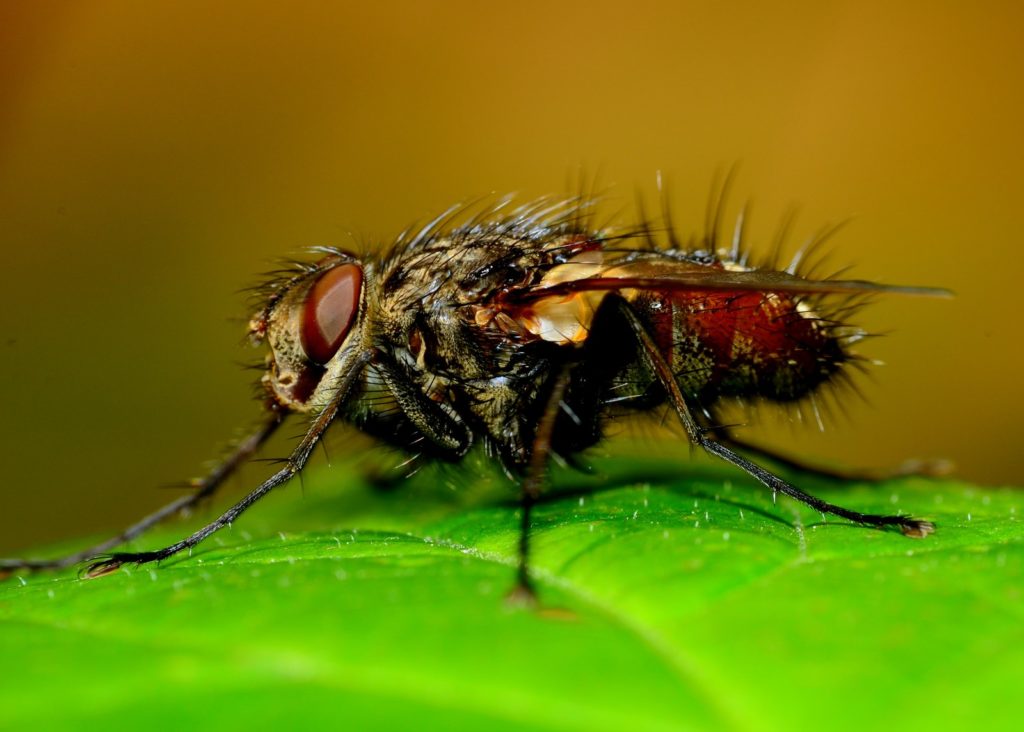The tachinid fly is a beneficial insect.
Tachnid fly larvae are parasitic; they feed on the living tissue and vital organs of many caterpillars including cabbage worms, cutworms, corn earworms, sawfly larvae, and tobacco budworms. They also feed on Colorado potato beetles, cucumber beetles, Japanese beetles, and Mexican bean beetles.

Adult tachinid flies are pollinators. They feed on nectar from small flowers including cilantro, dill, fennel, parsley, and Queen Anne’s lace as well as Aster, chamomile, feverfew, ox-eye daisy, and Shasta daisy. As they feed, tachinid flies transfer pollen and aid in the pollination of many herbs and flowers.
More than 1,300 species of tachinid flies have been found in North America and more than 8,200 species worldwide.
The tachinid fly scientific family is Tachinidae.
How to identify the tachinid fly
The adult tachinid fly looks much like a housefly but is covered with bristly hair. Tachid fly eggs are oval and white. Larvae are small cream-colored maggots.
How tachinid flies feed
Some female tachinid flies lay eggs on the bodies of host insects where they hatch. Others inject live larvae directly into the host. Still others lay eggs on plants and when the eggs hatch, the larvae attack target insects as they pass by.
Once larvae are in contact with the target insect, they first eat non-essential tissue then tunnel into the host’s internal organs and feed until the prey is dead and the larvae are fat. The larvae then pupate into adults often still inside the prey’s body.
Tachinid fly life cycle
Tachinid flies are parasites. Some female tachinid flies lay eggs on the bodies of host insects such as beet armyworms and parsley worms. Some females lay eggs on plants. Tachinid flies develop through four life stages: egg, larva, pupa, and adult. Instars have distinct mouthparts that they use to chew into the host; the larva exits the host and pupates nearby.
Tachinid flies can overwinter as mature larvae inside hosts in cold winter regions. In mild winter regions, they are active throughout the year. There are several generations each year.
How to attract tachinid flies to the garden
Tachinid flies feed on the nectar of small flowers. Plant cilantro, dill, fennel, parsley, and Queen Anne’s lace to attract tachinid flies. Planting any herbs or flowers frequented by tachinid flies in the garden will directly lead to the control of many pest insects.
Related articles:
Vegetable Garden Organic Pest Control
Vegetable Garden Beneficial Insects
Vegetable Garden Diseases Problem Solver
Vegetable Garden Organic Weed Control
Garden Planning Books at Amazon:
- Vegetable Garden Almanac & Planner
- Kitchen Garden Grower’s Guide Vegetable Encyclopedia
- Vegetable Garden Grower’s Guide
- Tomato Grower’s Answer Book















